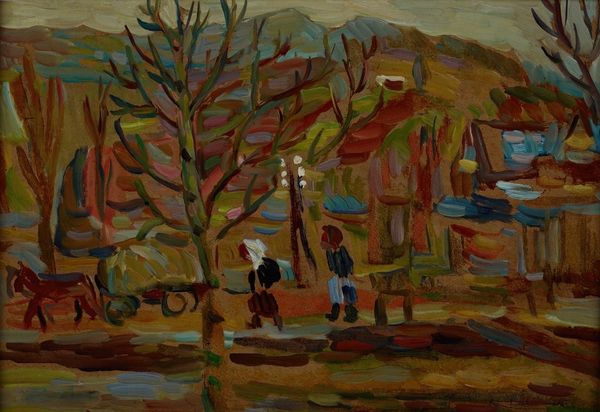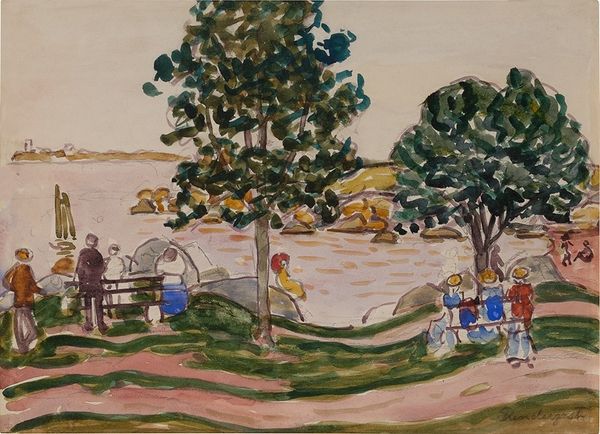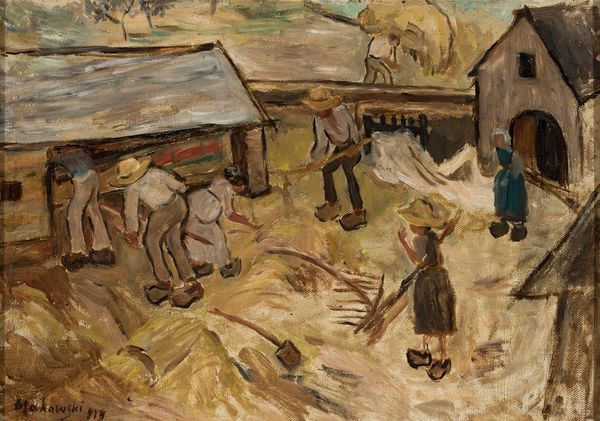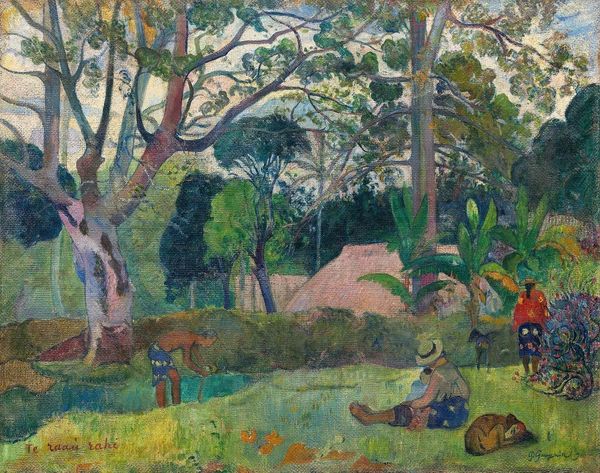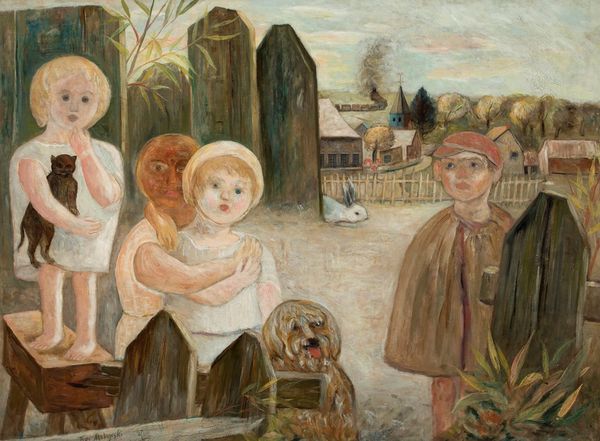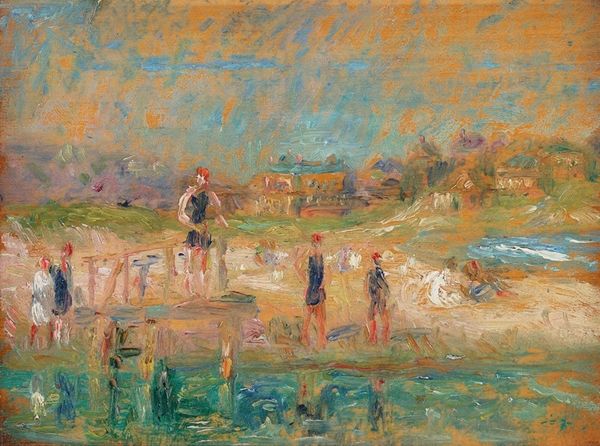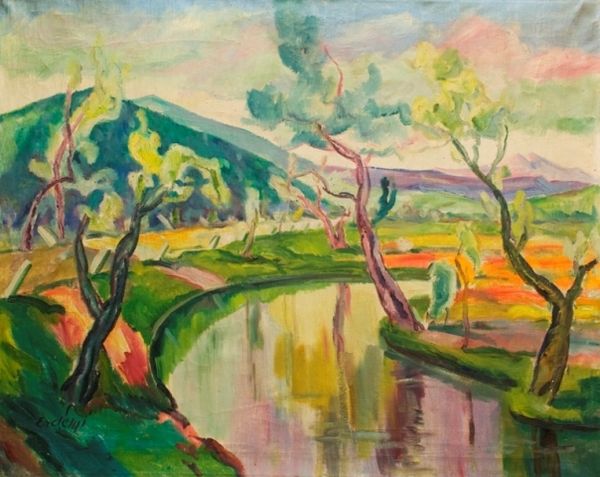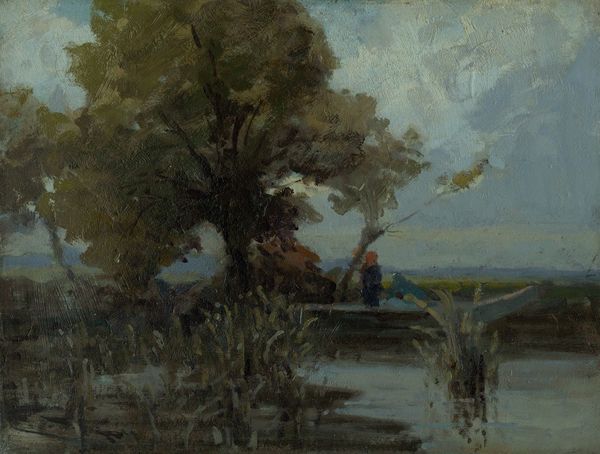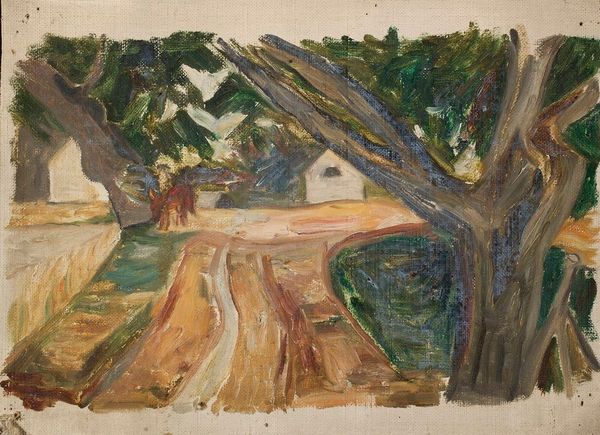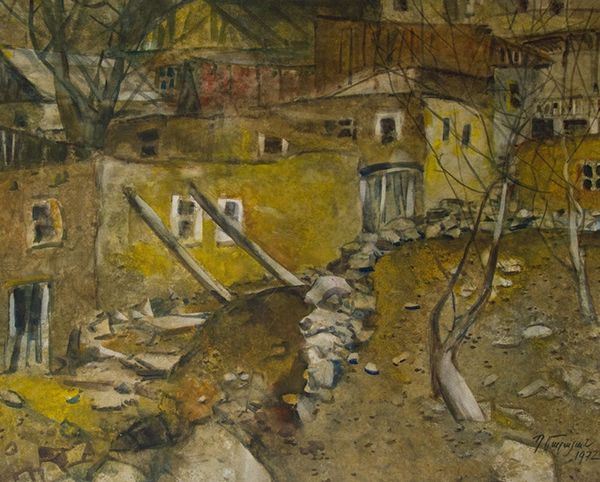
Copyright: Public Domain: Artvee
Curator: What a whimsical world! There's almost a dream-like quality to it, a hazy warmth that emanates despite the dense woodland depicted. Editor: We’re looking at Tadeusz Makowski’s "Mill by the River", completed in 1917 using oil paint. Immediately striking is the sheer activity, the way the people populate the landscape, both near the mill and in the distance. Curator: Exactly! The people and structures feel inextricably linked. You see how the figures, the mill house—they aren't separate from the landscape; rather they bubble up as features and products OF the land. Note how the figures' dress echoes the building roof line. Editor: Absolutely. The landscape's capacity to provide for production is the key element, shaping the lives of people. Consider the labor evident here: The figures clustered near the boat, engaged in what looks like shared toil, but also those trudging by the mill or in the fields. How might these representations connect to larger narratives of rural existence at this moment in Poland’s history? Curator: It’s poignant! In many ways the painting creates a kind of nostalgic, imagined community – these figures co-existing in their labor... What would it be like to live there, where everything one needs appears available? And note the subdued earthy tones–greens and browns reflecting what is at hand... the landscape itself is sustenance, is support! Editor: I’m interested in the implied value judgments within the image’s construction, of how the labor performed connects, in effect, to sustenance. The work represented—milling, transporting goods, tending livestock—all tied directly to concrete human needs. The painting itself also underscores value of rural communal labor at a moment of rapid industrialization... Curator: Right, in other words, the painting is asking if there is anything else. This all makes me think of simple folk songs about returning to the land... Editor: Fascinating. So, in reflecting upon labor’s value through this imagined idyllic landscape, perhaps it is possible to see how labor itself can define cultural norms within rapidly changing material conditions. Curator: You know, contemplating how deeply interwoven human industry is with the land is a remarkable thing to do...
Comments
No comments
Be the first to comment and join the conversation on the ultimate creative platform.
